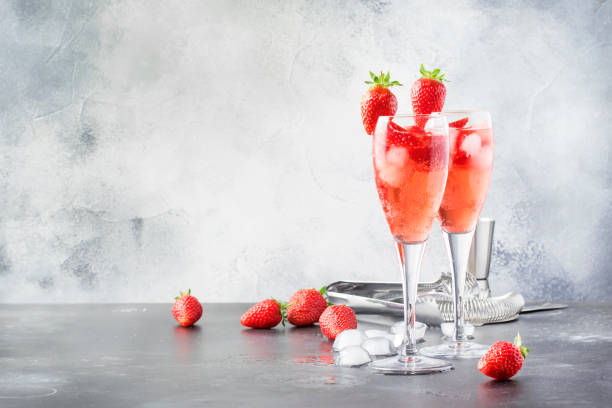You’ll love it served with French fries and fried chicken.
Champagne is the best sparkling wine. Champagne is made in the eponymous region, France. These world-class bubbles add luxury to any holiday or celebration. It cannot be easy to navigate the Champagne label world.
Most likely, you have heard the terms brut and extra brut used to describe your drinking habits. What do these terms mean? This is the short answer: How dry or sweet the wine.
Brut Champagnes are like the Goldilocks bubbles. They’re both sweet and dry. These wines tend to be on the dry side of the spectrum and are drier than Champagnes that are “extra dry” or “extra hard.” However, they are sweeter than champagnes labeled “extra brut” because of their balance. Here’s what you need to know about these bubbly bottles.
What is Brut Champagne?
Brut Champagne refers to sparkling wines classified according to their level of dosage (or added sweetness) at bottling.
What are good food pairings with Brut Champagne Champagne?
Brûl Champagnes are one of the most versatile wines, thanks to their acidity, strong backbones and balanced sugar additions. These wines can be paired with various foods, including fried appetizers, potato chips, and poultry-based main dishes. Caviar is a great accompaniment to any meal, but we believe it tastes even better when taken out of its rarified world and paired with everyday foods. For a truly delicious food pairing, grab your favorite salty snacks, such as potato chips, French fries or fried chicken, and open a bottle of brut Champagne.
Agrapart & Fils 7 Crus Brut Champagne Grand Cru Avize N.V., Avize (Vallee de la Marne)
Avize’s multifaceted Chardonnay uses seven Cote des Blancs villages to create its unique assemblage. This cuvée is exceptionally value-driven and has refreshing, chalky flavors of lemon, almond skin and seashells. It comes in a 7 g/L bottle.
Chartogne-Taillet Sainte Anne Brut N.V., Merfy (Montagne de Reims)
Charge-Taillet uses organic and biodynamic farming, a rare practice in Champagne. This wine is delicious and responsibly made. It is made from a 50/50 mix of pinot noir and chardonnay grapes. The wine was bottled with 4.5 grams of dosage. The harmonious finish is achieved by the vibrant flavors of apple skin, minerals, and brioche.
Laherte Freres Ultradition Brut Champagne, Chavot-Courcourt (Vallee de la Marne)
The 60 percent pinot Meunier-dominant wine blend is rounded out by 30 percent chardonnay, a little bit of pinot noir, and 40 percent from reserve wines. The fruit was sourced from seven villages in the Coteaux sud d’Epernay and Vallee de la Marne. The wine is bottled at 6-8 g/L. The wine has a full-bodied, smooth palate with notes of herbs, baked apples, and grilled nuts.
Lenoble Intense Brut Champagne N.V., Damery (Montagne de Reims)
This high-quality, elegant Champagne is made from a blend of three traditional wines of the region, Pinot Meunier and pinot noir. It is bottled at 6 g/L. This cuvee’s Chardonnay comes from Chouilly, while the pinot noir is a product of Bisseuil’s Premier Cru. A refreshing finish is achieved by the flavors of baked bread, yellow stone fruit, and pear skin. This wine is an incredible value for its price.
Savart L’Ouverture Brut Champagne Premier Cru, Ecueil (Montagne de Reims)
This complex, clean blanc de noirs is made entirely from Premier Cru-designated pinot gris. Bottled with 7 g/L, it has chalky notes of red fruits, yeast, saline and yeast. This Champagne is great with many main dishes, including sea bass and roasted poultry. This producer is a trusted choice for organic, terroir-driven Champagnes.

